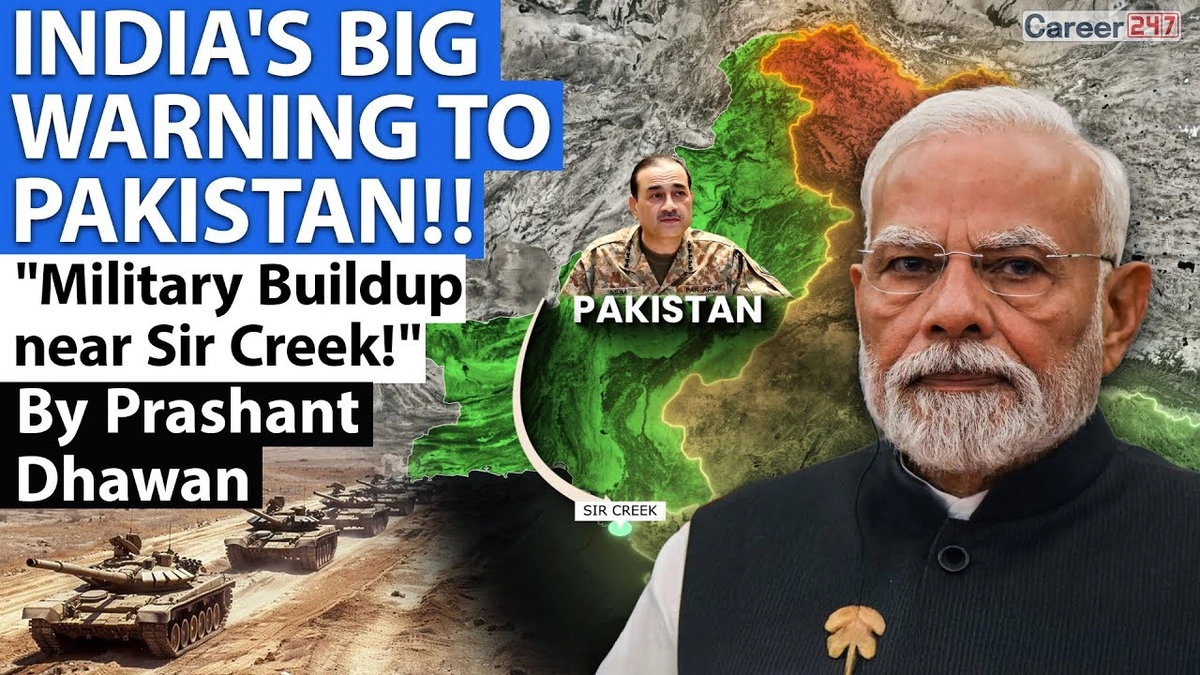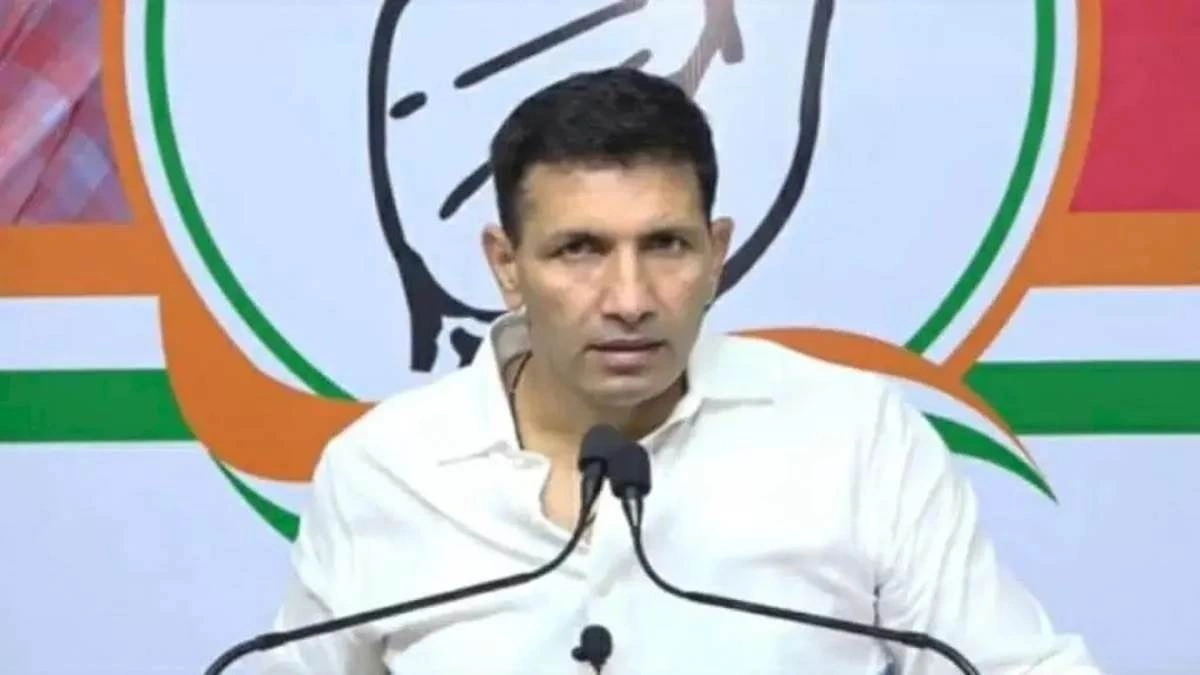Sir Creek Standoff | Why This Patch of Mud Still Matters Between Pakistan and India
Sir Creek. Just the name sounds like a forgotten corner of the world, doesn’t it? And in some ways, it is. But here’s the thing: this 96-kilometer strip of tidal estuary between India and Pakistan is anything but irrelevant. It’s a persistent source of tension, a breeding ground for mistrust, and – what fascinates me – a crucial piece in the larger puzzle of Indo-Pak relations. Let’s be honest, it’s more than just a line on a map; it’s a symbol.
The Creek’s Confusing Geography | Why It’s a Problem

Okay, so what is Sir Creek? Imagine a muddy finger of water snaking its way between the Indian state of Gujarat and the Pakistani province of Sindh. The problem? The two countries can’t agree on where that finger exactly points. India claims the boundary lies mid-channel, according to the Thalweg Principle, which is commonly used for demarcating boundaries of waterways. Pakistan, however, insists the boundary is along the eastern bank. This seemingly small discrepancy has massive implications.
But, there’s a crucial point here. This isn’t just about a few kilometers of muddy water. It’s about what lies beneath and beyond. Think fishing rights. Potential oil and gas reserves. And, most importantly, the extension of each country’s Exclusive Economic Zone (EEZ) into the Arabian Sea. Control over Sir Creek dictates control over a much larger, more resource-rich maritime area. This is why the pakistan military sir creek issue keeps resurfacing.
The Stakes Are Higher Than Just Mud | Economic and Strategic Implications
Let’s rephrase that for clarity: The economic implications are huge. If India gets its way, it gains a significant chunk of the EEZ. If Pakistan prevails, it gets the same. This is why negotiations have been so protracted and, frankly, so frustrating. It’s not about pride; it’s about potential wealth. Now, a common mistake I see people make is thinking this is solely an economic issue. It’s not.
Strategically, control of Sir Creek gives the controlling nation an advantage in monitoring maritime activity in the region. It’s a vantage point, a listening post, a place from which to project power. In a region already fraught with tension, this adds another layer of complexity. The presence of the Pakistan military near Sir Creek is a constant reminder of this strategic importance.
Historical Baggage | The Ghosts of Partition Still Haunt
The roots of the Sir Creek dispute lie in the unresolved issues of Partition. The Radcliffe Line, which demarcated the border between India and Pakistan in 1947, was notoriously vague in this area. Colonial-era maps are contradictory, and both sides interpret them to their advantage. And, let’s be honest, the legacy of mistrust and animosity between the two countries makes finding a mutually agreeable solution incredibly difficult. You see, what fascinates me is how historical grievances continue to shape present-day conflicts.
But, I initially thought this was straightforward, but then I realized the issue is deeply intertwined with national identity and historical narratives. For India, ceding ground on Sir Creek could be seen as a sign of weakness. For Pakistan, it could be interpreted as a betrayal of its claims. It’s a delicate balancing act, and one that requires a willingness to compromise – something that has been in short supply in Indo-Pak relations.
The Human Cost | Fishermen and Border Communities
Amidst all the geopolitical maneuvering, it’s easy to forget the human cost of the Sir Creek dispute. For the fishermen who ply these waters, the uncertainty surrounding the boundary can be a matter of life and death. They risk arrest and imprisonment if they stray into what the other country considers its territory. This is particularly true for fishermen from both India and Pakistan , who often lack the resources to navigate the complex legal and political landscape.
And the border communities on both sides of the creek live in a state of constant apprehension. They are caught in the crossfire of a dispute that is not of their making. Their livelihoods are threatened, their lives disrupted. These communities serve as a stark reminder that border disputes are not just abstract legal matters; they have real consequences for real people. According to Wikipedia , several rounds of talks have been held to resolve the issues around Sir Creek boundary .
Possible Solutions and the Path Forward
So, is there a way out of this mess? Perhaps. One potential solution is joint management of the creek. This would involve both countries sharing responsibility for patrolling the waters, managing resources, and ensuring the safety of fishermen. Another option is to refer the dispute to international arbitration. However, both countries have been reluctant to do so, fearing an unfavorable outcome. Here is the thing, what needs to be done?
Ultimately, a resolution to the Sir Creek dispute requires political will and a willingness to compromise. It requires both India and Pakistan to put aside their historical grievances and focus on the long-term benefits of cooperation. It requires recognizing that a mutually agreeable solution is possible, and that it is in the best interests of both countries. This also includes looking into maritime boundary to come to a conclusion. But it requires a shift in mindset.
FAQ Section
Frequently Asked Questions About the Sir Creek Dispute
What exactly is the Sir Creek dispute about?
The Sir Creek dispute centers on the demarcation of the boundary between India and Pakistan in a 96-kilometer tidal estuary. Both countries have differing claims regarding the boundary line.
Why is Sir Creek important?
Sir Creek is important due to its potential economic and strategic value. Control over the creek impacts fishing rights, potential oil and gas exploration, and the extension of each country’s Exclusive Economic Zone (EEZ).
What is India’s claim regarding Sir Creek?
India claims the boundary lies mid-channel, according to the Thalweg Principle.
What is Pakistan’s claim regarding Sir Creek?
Pakistan insists the boundary is along the eastern bank of the creek. Also, Pakistani authorities have different perspective on it.
What are some possible solutions to the Sir Creek dispute?
Possible solutions include joint management of the creek, international arbitration, or bilateral negotiations based on compromise.
What is the current status of negotiations between India and Pakistan regarding Sir Creek?
Negotiations between India and Pakistan have been ongoing for several years, but a final resolution has not yet been reached. Talks have been stalled due to lack of consensus on the boundary demarcation.













